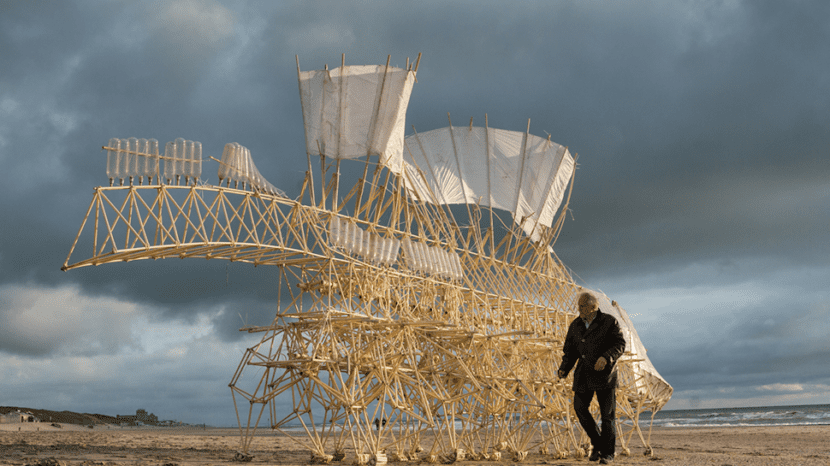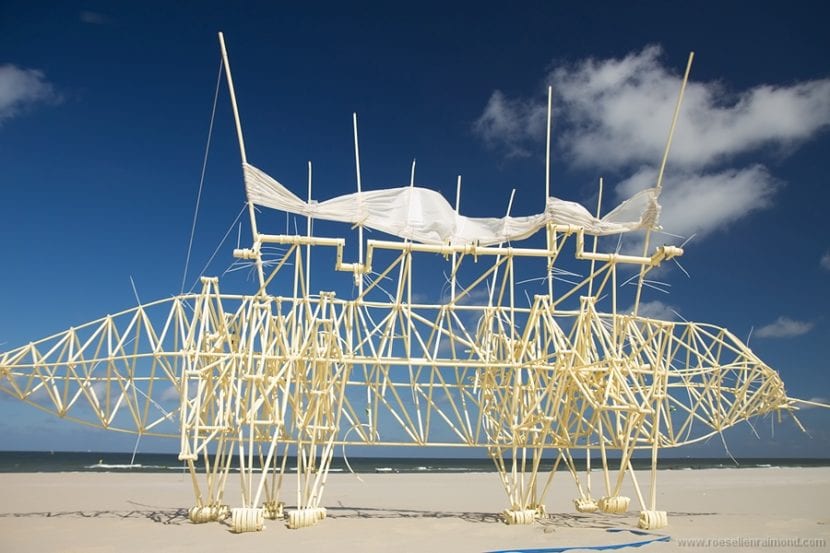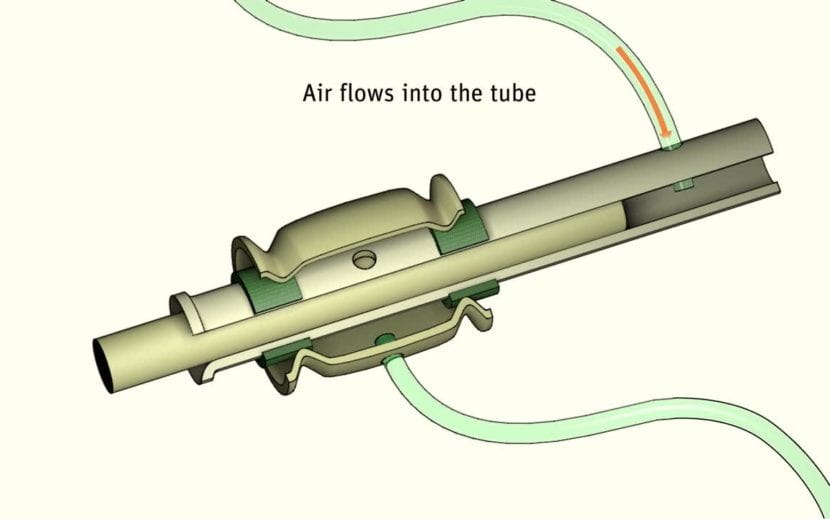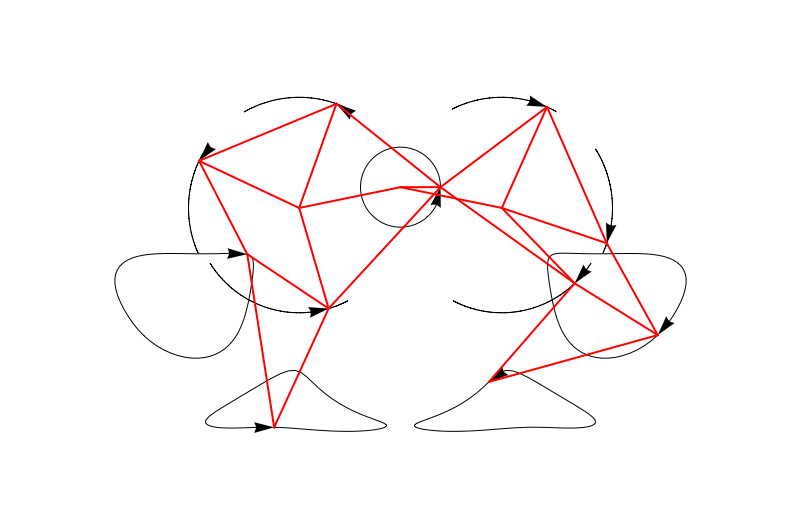
Since the 90s, Dutch artist Theo Jansen has dedicated his career to building incredible creatures. These self-propelled machines are called "Strandbeest" or "beach animals" in Spanish. They have evolved over the years to populate the beaches and contribute to their care.
With this project, Jansen intends to create a fusion between art and engineering. In this way it equips the animals with their own mechanisms for reading the environment and movement. On the other hand, he studies in detail the dynamics of animal movement to reproduce it in his work.

These large surreal creatures are designed in such a way that they move independently thanks to the wind propulsion and kinetic energy. Such structures appear to walk and move organically, mimicking the movements of animals.
Her CARACTERISTICS aesthetics are of great detail and intricacy. Its construction makes the work is perceived as a prehistoric skeleton that has come back to life and precisely thanks to the place where it lives is that it acquires a highly surreal sense.

However, these machines have not always been of such high complexity. Originally, they started out as rudimentary skeletons that they could not interact with the medium. But, after the integration of techniques evolutionary computing, they began to be able to read the environment. Thus they were able to understand the rains, storms and the presence of water. In this way today they walk along the beaches of Holland like any other pet.

Security
Jansen's beach animals are built from long PVC pipes, wood and fabric sails. All these elements fulfill the same functions as the muscles and organs in a real body. In this way we can see how the animal comes to life among them.
Stomachs of wind

The stomach system is based on pistons receiving pressurized air from the candles on top. They collect air and store it in bottles. Once all the necessary air has been collected, it is slowly released through tubes, into the pistons. Thus the pistons actuate the muscles.
Muscles
The muscles consist of a tube that contains another inside, which is capable of moving in and out. When the air enters the bottles through a small pipe, this pushes a piston at the end of the inner tube of the muscle so that the tube lengthens. Such action allows movement that, when performed simultaneously on the entire animal, enables it to walk.
Sensitive system
The machines are not equipped with any type of electronic sensor. On the contrary, in order to interact with their environment, they use only a mechanism that can read the amount of water inside the pipes. In this way, when the animal is very close to the beach, its flooded pipes activate a mechanism that makes it return to the beach. On the contrary, if you move away from the wet sand, the mechanism is activated again to turn around.
Here we leave you a video so you can see more:

Incredible * 0 * Thanks for sharing Melisa